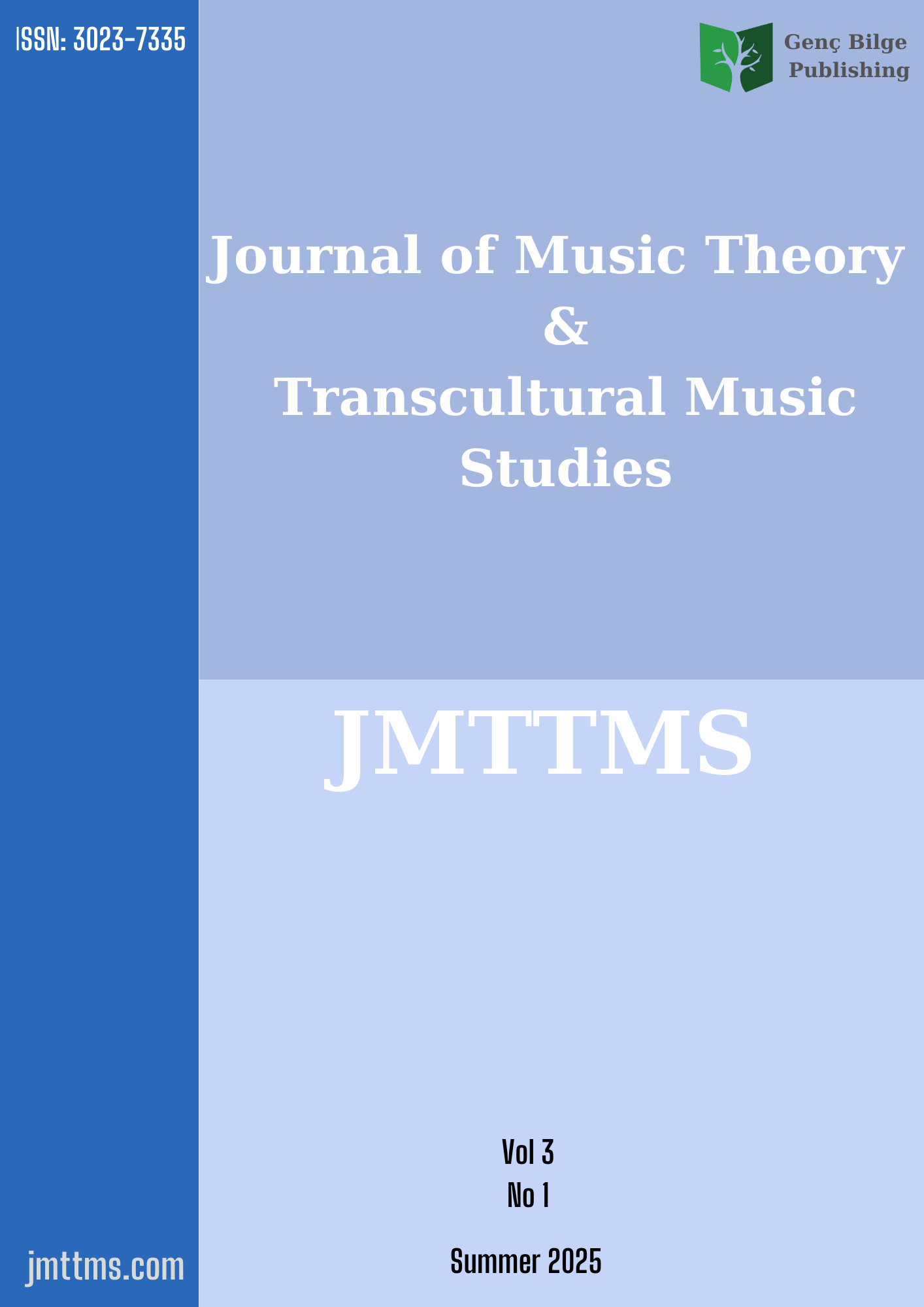The examination of the musical and cultural characteristics of Yalli dance
DOI:
https://doi.org/10.5281/zenodo.15869121Keywords:
Agbaba, Folklore, Intonation, Music culture, Western Azerbaijan, YalliAbstract
One of the dances that is widely spread and performed collectively in the folklore of the Turkish world is the Yalli. The Yalli dances, which are widespread in Western Azerbaijan—especially in Sharur-Deralayaz, Vedi, Agbaba, and other regions—are very well known. Yalli are dances performed by Azerbaijanis in ancient Iravan and several of its districts with specific sequences of movements. The first person to collect and record Western Azerbaijan Yallis was Rauf Bahmanli. The purpose of the presented research is to analyze the Yallis belonging to the musical folklore of the Agbaba district in Western Azerbaijan, one of the oldest and richest regions of Azerbaijan in terms of climate. The folklore samples of the Agbaba district have been formed as a result of long-term historical development, and studying these samples constitutes an important stage in identifying the ethnic characteristics of the area. This research is significant for those working in relevant fields such as folklorists, musicologists, and music literature experts, and it can also serve as an additional resource in music education institutions. The Yalli of the Agbaba district were analyzed in this article. In this research, Yalli samples from Agbaba were recorded by researchers for the first time and included in the study. Additionally, the Yalli recorded by R. Bahmanli was also incorporated into the research. Among the Yallis included are “Agbaba Yalli,” recorded by the Azerbaijan State Dance Ensemble at the “Khari Bulbul” Festival held in Shusha in 2024; the “Agbaba Yalli” performed at the wedding ceremony of Amasians in 2019; and Gasham Ismayilov's Yalli performance, notated by R. Bahmanli in 2015. The notation of the first three Yallis was prepared by researchers. The main time signatures found are 6/8, 2/4, 5/8, and others. Document analysis, one of the qualitative research methods, was used as the research model. Based on the findings, Yallis were examined in terms of fret-intonation, formal structure, time signature variations, and performance characteristics. It should also be noted that Yalli often reflects life and historical events.
Downloads
Published
Issue
Section
License
Copyright (c) 2025 Journal of Music Theory and Transcultural Music Studies

This work is licensed under a Creative Commons Attribution-NonCommercial-NoDerivatives 4.0 International License.
© JMTTMS.Published by Genc Bilge (Young Wise) Pub. Ltd. This is an open access article under the CC BY-NC-ND license




